Do Cockroach Sprays Work? An In-Depth Analysis
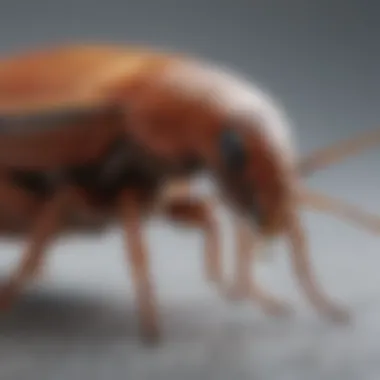
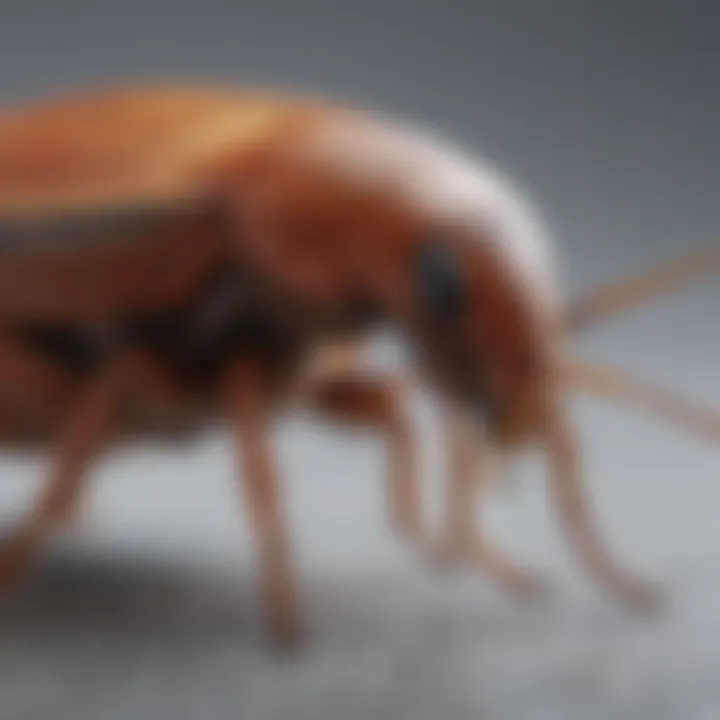
Intro
Cockroaches are notorious pests that can invoke fear and disgust in many homeowners. Understanding cockroach behavior and biology is crucial for effective pest management. This article delves into the effectiveness of cockroach sprays, evaluating their efficacy, application methods, and safety concerns. The aim is to provide insight that helps homeowners make informed decisions in dealing with cockroach infestations.
Pest Identification
Cockroaches come in several species, but the most common ones encountered in homes are the German cockroach, American cockroach, and Oriental cockroach.
Detailed descriptions of common pests
- German Cockroach: Generally small, about half an inch long, and light brown with two dark stripes on its back. It is one of the most prevalent household pests.
- American Cockroach: Larger than the German, it can reach up to three inches long and is reddish-brown with a yellow margin on its thorax.
- Oriental Cockroach: It is dark brown to black and about one inch in length. Unlike the others, it prefers cooler environments.
Signs and symptoms of infestations
Identifying an infestation early can prevent extensive damage. Signs include:
- Droppings resembling black pepper grains.
- Egg cases, which can be found in hidden areas.
- A musty odor, especially in large infestations.
- Dead cockroaches or skins from molting.
Prevention Strategies
Effective pest management starts long before deploying sprays. Prevention can significantly reduce the risk of infestations.
Home maintenance tips for pest prevention
- Seal Cracks and Crevices: Use caulk to seal openings where cockroaches can enter.
- Keep Food Secure: Store food in airtight containers and clean spills promptly.
- Maintain Cleanliness: Regular cleaning minimizes attractants, including crumbs and waste.
Natural deterrents and barriers
Certain natural substances deter cockroaches, such as:
- Diatomaceous Earth: A powder that destroys cockroach exoskeletons upon contact.
- Boric Acid: An effective natural insecticide when used correctly.
- Essential Oils: Such as peppermint and tea tree oil can repel cockroaches.
Treatment Options
When prevention fails, treatments become necessary. It's critical to balance effectiveness with safety.
Overview of chemical vs. natural treatments
Cockroach sprays fall into two primary categories:
- Chemical Treatments: Often contain pyrethroids or neonicotinoids. They act quickly but may have side effects on humans and pets.
- Natural Treatments: Generally made from plant-based ingredients, such as neem oil. They tend to be safer but may require more frequent application.
Step-by-step guides for DIY treatments
For those who prefer to tackle the issue themselves, consider these approaches:
- Prepare the Area: Remove food and cover surfaces before applying any treatment.
- Select a Treatment: Choose between chemical and natural sprays based on your preferences.
- Follow Application Instructions: Read labels carefully, paying attention to safety guidelines.
- Monitor Results: Observe the affected areas for activity and effectiveness.
"Understanding the biology of cockroaches helps tailor effective treatments for infestations."
Understanding the Cockroach Problem
Understanding the cockroach problem is crucial for effective pest management. As a household pest, cockroaches not only disrupt living spaces but also pose serious health risks. Their presence is often a sign of unsanitary conditions, leading to potential disease transmission. This section explores the biology and behavior of cockroaches and highlights why they are a common nuisance for homeowners.
Biology and Behavior of Cockroaches
Cockroaches are resilient insects that thrive in diverse environments. They have been around for millions of years and possess biological traits that enable them to survive and reproduce quickly. Adult cockroaches can live for several months without food, and they are adept at hiding in small cracks and crevices. Their nocturnal nature means they are most active at night, which makes them difficult to spot during the day.
Cockroaches reproduce rapidly, with females capable of producing batches of eggs that can contain dozens of individuals. This rapid reproduction can lead to significant infestations if left unaddressed. Understanding their life cycle is vital. The common species found in homes include the German cockroach, American cockroach, and Oriental cockroach, each with specific habits and habitats that inform pest control strategies.
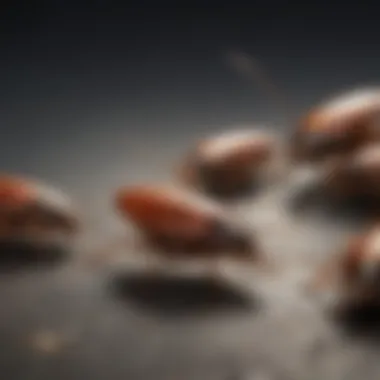
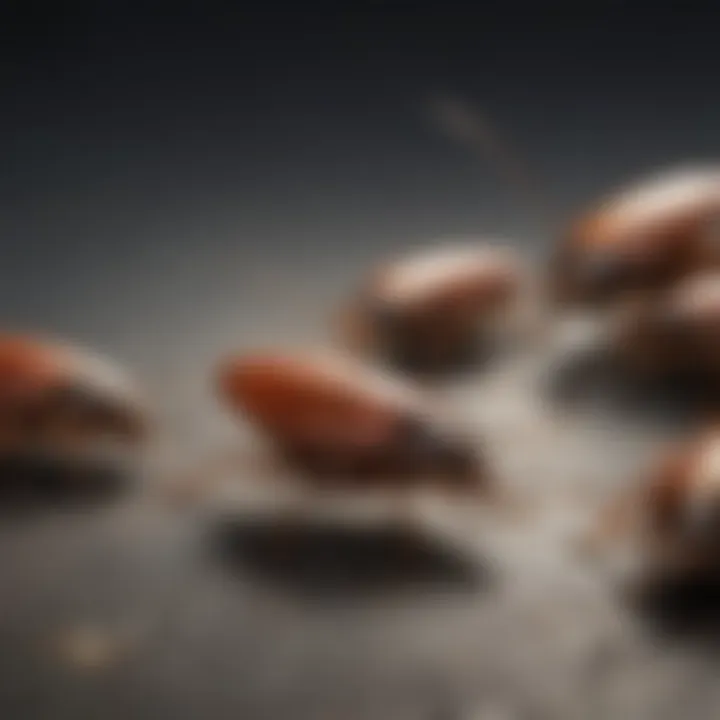
Why Cockroaches Are a Common Household Pest
Cockroaches are considered a prevalent household pest for various reasons. They are attracted to food sources, moisture, and warm environments. Kitchens and bathrooms are particularly appealing to them because of access to food and water.
Their presence often correlates with unclean conditions, and their ability to thrive in a wide range of environments makes them hard to eliminate. Here are some reasons why they are common:
- Adaptability: Cockroaches can survive in various environments, from urban settings to rural homes.
- Food Sources: They are not picky eaters and will consume anything from crumbs to organic waste.
- Hiding Skills: Their habit of hiding in small spaces keeps them out of sight, making detection difficult for homeowners.
"Effective pest management begins with understanding the behaviors and habits of cockroaches."
In summary, recognizing the biology and behavior of cockroaches is essential for anyone looking to manage these pests effectively. The insights from this section will lay the foundation for exploring the various treatment methods, including the effectiveness of sprays in controlling infestations.
Types of Cockroach Sprays
The choice of cockroach sprays plays a critical role in the overall pest management strategy. Knowing the types available can influence both the efficacy of treatment and the safety of the environment. This section examines the classifications of sprays, their advantages, and considerations to keep in mind for effective use.
Synthetic Chemical Sprays
Synthetic chemical sprays are commonly used in cockroach management. They typically contain powerful insecticides formulated to swiftly eliminate cockroach populations. These sprays often include ingredients like pyrethroids and organophosphates. They disrupt the nervous system of cockroaches, leading to quick incapacitation or death.
Advantages of synthetic sprays include immediate effectiveness and targeted action against various species of cockroaches. However, these substances can pose health risks to humans and pets if misused. It is crucial to follow product labeling and safety instructions for application.
Natural and Organic Insecticides
Natural and organic insecticides offer an alternative to synthetic options. These sprays often contain plant extracts such as neem oil or diatomaceous earth, which act as deterrents or eliminate insects by dehydrating them. While these sprays tend to be less toxic to humans and pets, they often provide a slower action compared to their synthetic counterparts.
The benefit of using natural insecticides is their reduced environmental impact. They tend to break down more quickly without lingering effects in the environment. Homeowners looking for eco-friendly solutions may find these options appealing. Nonetheless, efficacy can be variable, and repeated applications may be necessary for sustained results.
Comparison of Different Spray Types
Comparing synthetic and natural insecticides reveals key differences. Synthetic sprays, such as Raid Max Ant and Roach Killer, provide rapid action but come with potential health risks. In contrast, natural insecticides, like EcoSMART Organic Insect Killer, are generally safer but may require more time to achieve results.
When selecting a cockroach spray, consider the following factors:
- Speed of Action: Synthetic sprays usually act faster.
- Safety: Natural sprays are typically safer for family and pets.
- Environmental Impact: Natural options are preferable for eco-conscious users.
"Choosing the right spray is about balancing effectiveness with safety concerns."
In summary, understanding the types of cockroach sprays enhances the ability to make informed choices tailored to specific situations. By considering the benefits and risks associated with each type, homeowners can develop a more effective cockroach management plan.
Mechanism of Action
Understanding the mechanism of action is crucial when evaluating the effectiveness of cockroach sprays. This segment explores how these sprays interact with cockroaches and their biological systems. Knowing these mechanisms helps homeowners make informed decisions on pest management.
The efficiency of the sprays often relates to their specific active ingredients and how these compounds act on cockroaches. By dissecting these elements, one can appreciate the nuanced application of these products in real-world settings. Additionally, a clear grasp of the mechanism of action allows for better strategy planning in your pest control approach, ensuring higher chances of success against infestations.
How Cockroach Sprays Work
Cockroach sprays utilize various active compounds designed to disrupt cockroaches' biological functions. These compounds can affect their nervous systems, respiratory systems, or even their growth patterns.
When a cockroach encounters the spray, its body absorbs the active ingredient, leading to a chain of harmful effects, often resulting in death. Here are some key points regarding how these sprays work:
- Nervous System Disruption: Many sprays contain neurotoxic ingredients that impair the nervous system, leading to paralysis and eventual mortality.
- Contact and Ingestion: Sprays may operate through direct contact or ingestion. Cockroaches can ingest these chemicals while grooming themselves or feeding.
- Repellency Attributes: Some sprays also include repellents that deter cockroaches from returning to treated areas, adding an extra layer of control.
"An understanding of how cockroach sprays work allows homeowners to apply these solutions more strategically, potentially enhancing effectiveness."
Homeowners should be aware that not all sprays are equally effective. The mode of action differs among products, leading to variable success rates.
Active Ingredients in Cockroach Sprays
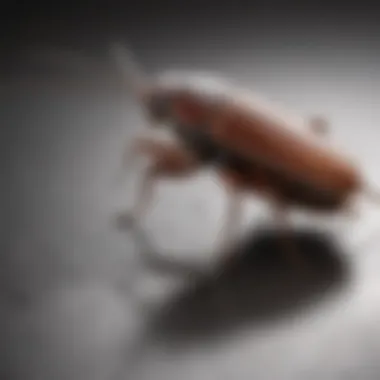
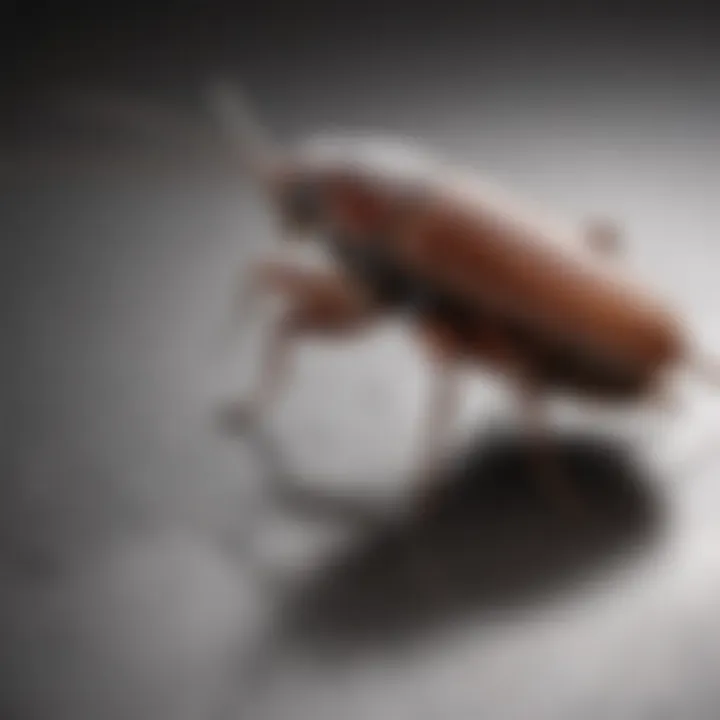
The active ingredients in cockroach sprays are what distinguishes one product from another. These compounds dictate how well the spray can manage a cockroach infestation. Commonly used active ingredients include:
- Pyrethroids: Synthetic chemicals based on natural pyrethrins, which act on the insect's nervous system, causing paralysis and death.
- Insect Growth Regulators (IGRs): Ingredients like methoprene that disrupt the life cycle of cockroaches, preventing them from maturing and reproducing.
- Boric Acid: A natural compound that functions as a poison for cockroaches when ingested, affecting their digestive systems.
Understanding these active ingredients enables homeowners to choose products that align with their specific pest control needs. Each ingredient carries its advantages and disadvantages, making knowledge of these elements essential for effective application.
In summary, the mechanism of action of cockroach sprays and the specific active ingredients used greatly influence their effectiveness. A thorough understanding of these factors will assist homeowners in selecting the right products and implementing them effectively.
Application Techniques
Understanding how to apply cockroach sprays is crucial for effective pest control. The method of application can significantly influence the outcome of any pest management strategy. Proper techniques not only enhance the effectiveness of the spray but also minimize potential risks to humans and pets.
When using cockroach sprays, it is important to consider areas where cockroaches are likely to hide. Application should focus on cracks, crevices, and places known for high cockroach activity. For example, behind appliances, under sinks, and along baseboards are strategic locations. Using a thin, even layer allows the active ingredients to work more effectively without overwhelming the area with chemical concentration.
Another essential aspect is timing. Applying sprays during the nighttime or when cockroaches are most active can improve the chances of encountering these pests. Homeowners should also consider the weather if using sprays outdoors. For instance, wind can disperse the active ingredients, leading to reduced efficacy. Overall, the right application techniques contribute to a more successful pest control operation.
How to Properly Use Cockroach Sprays
Proper usage of cockroach sprays begins with reading the product label. This includes understanding the instructions related to dosage, timing, and safety precautions. Generally, ensure the area is prepared for application by removing food and food-related items. These steps minimize the risk of chemical exposure.
Next, it is beneficial to shake the canister or bottle well before use to ensure even distribution of the active ingredients. Hold the spray can at a recommended distance from the targeted area. This distance often varies between products, so refer to the label.
Spraying locations should focus on high-risk areas identified earlier. It's advised to use a rhythmic side-to-side motion while spraying. Household owners must avoid using excessive amounts on one spot; a light misting is usually sufficient.
After spraying, allow the area to dry completely before reintroducing pets or humans back into the space. This helps mitigate potential exposure to harmful chemicals and gives the spray time to act effectively. Monitoring the treated areas over the next few days is also important for spotting any remaining cockroach activity.
Common Mistakes When Using Sprays
Many homeowners may overlook some critical aspects when using cockroach sprays. A common mistake is failing to follow the instructions on the product label. Ignoring guidance regarding safety measures or diluting the spray too much can reduce its overall efficiency.
Another error is spraying only visible cockroaches. This approach neglects the hidden populations that may not be easily seen. Homeowners should consider preventive applications in areas frequented by cockroaches.
In addition, some users tend to clean surfaces immediately after spraying. While it is essential to maintain cleanliness, doing so can remove the active ingredients from surfaces before they have a chance to eliminate cockroaches.
Lastly, attempting to combine different spray products is often a mistake. Mixing chemicals can lead to ineffective solutions and potentially dangerous reactions. Always stick to one product at a time to ensure safety and effectiveness.
Effectiveness of Cockroach Sprays
Understanding the effectiveness of cockroach sprays is pivotal in assessing their role in pest control. Homeowners often find themselves grappling with pest infestations that disrupt their daily lives. Cockroach sprays can offer a quick solution, but it is essential to gauge their actual impact, whether short-term or long-term. The nuances of effectiveness encompass several factors, including active ingredients, application methods, and the biology of cockroaches, all of which contribute to how well these sprays work in real-world scenarios.
Short-Term Versus Long-Term Outcomes
Cockroach sprays can yield different results depending on the timeframe considered. In the short term, sprays often provide immediate relief from visible pests. They are designed to act swiftly, killing cockroaches on contact. This effect can be pleasing for homeowners facing an unsettling sight of crawling pests. However, the long-term effectiveness of these sprays raises more questions.
Long-term outcomes depend on multiple elements. If remaining roaches survive the initial spray, they may reproduce quickly, leading to a resurgence in the population. Moreover, over-reliance on sprays may contribute to resistance development in cockroach populations. This phenomenon is concerning. Therefore, while sprays are effective for any immediate problem, they may not be sufficient as a sole solution for ongoing management.
Factors Impacting Effectiveness
Several factors can significantly influence how effective cockroach sprays are:
- Environment: High humidity and cluttered spaces can diminish effectiveness. Clogged areas allow cockroaches to hide, avoiding direct contact with the spray.
- Spray Technique: Proper application matters. Techniques such as focusing on entry points and hiding spots can enhance effectiveness.
- Active Ingredients: The type of chemicals used also plays a crucial role. For example, pyrethroids kill swiftly, while others may have prolonged residual activity.
By considering these elements, homeowners can maximize the efficacy of cockroach sprays in combating infestations.
Expert Opinions on Spray Effectiveness
Pest control professionals often express a range of opinions on the effectiveness of cockroach sprays. Several experts stress that while sprays can be helpful, they should be part of a more comprehensive pest management strategy.
Many recommend combining sprays with baiting methods for optimal results. Baits can attract cockroaches and deliver poison to hidden roaches, which sprays may not reach effectively. Experts emphasize the importance of using low-impact, natural products when possible to mitigate risks to pets and children. The consensus suggests that sprays may provide temporary relief but should not be relied upon solely for long-term pest control.
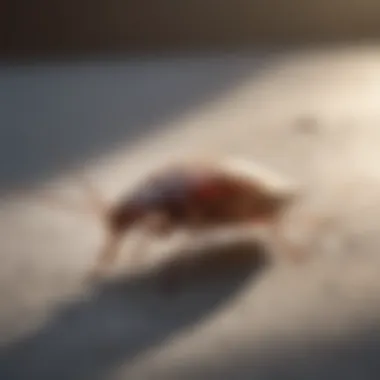
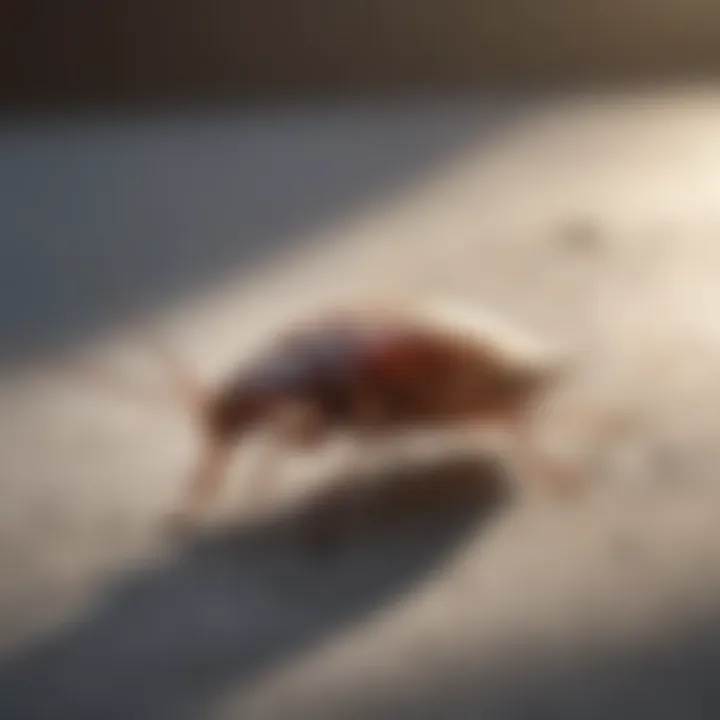
"Effective pest management requires a holistic approach that considers all aspects of cockroach behavior and an integrated strategy for control."
Safety Concerns
Safety concerns surrounding cockroach sprays play a vital role in determining their wider application and acceptance among homeowners. Understanding the potential risks helps consumers make informed decisions. This section examines health risks and the environmental impact of these products, highlighting the importance of safety and efficacy in pest control strategies.
Health Risks to Humans and Pets
Cockroach sprays often contain potent chemicals, which can pose health risks to both humans and pets. Prolonged exposure to these pesticides can lead to various health issues. Common symptoms include respiratory problems, skin irritation, or even more severe reactions. This risk increases, especially for individuals with pre-existing conditions such as asthma or allergies.
In addition, pets may unknowingly come into contact with treated surfaces. They can be particularly vulnerable due to their smaller size and differing body chemistry. Therefore, it is essential to read product labels and follow safety precautions.
"Proper ventilation and keeping children and pets away from treated areas are crucial to minimizing health risks."
Homeowners should consider taking the following precautions:
- Use sprays in well-ventilated areas.
- Avoid applying sprays near food or pet areas.
- Follow specific post-application guidelines provided by the product manufacturer.
- Store sprays safely, out of reach of children and pets.
Environmental Impact of Cockroach Sprays
Though effective against pests, cockroach sprays can have significant environmental consequences. Some active ingredients in these sprays may harm beneficial insects, pollinators, and even aquatic life. When sprays are used indiscriminately, there is potential for chemical runoff which can affect water quality.
Moreover, the accumulation of certain chemicals in the ecosystem raises concerns about biodiversity. Over time, the use of sprays can result in pests developing resistance to pesticides, leading to a cycle of increased chemical use. Therefore, integrating eco-friendly alternatives or adopting Integrated Pest Management strategies is advisable.
Here are some factors to consider regarding environmental impact:
- Opt for products with low toxicity to non-target organisms.
- Use sparingly and as part of a broader pest management plan.
- Be conscious of local wildlife and surrounding ecosystems when applying sprays.
Awareness of these safety concerns helps in selecting effective solutions without compromising health or environmental integrity.
Alternatives to Cockroach Sprays
Exploring alternatives to cockroach sprays is essential for effective pest management. Cockroach sprays may provide quick solutions but often lack in creating a long-lasting impact on infestations. By understanding other available options, homeowners can make informed choices that may be more effective or safer in certain situations.
Baits and Traps as Alternatives
Baits and traps are considered one of the most effective methods to manage cockroach populations. They are designed to lure cockroaches in with food or pheromones, then either poison or capture them.
- Baits contain slow-acting insecticides, allowing the affected roach to return to its nest, where it can share the poison with others. This method is particularly effective in reducing the overall population over time.
- Traps, on the other hand, offer a visible way to monitor and catch cockroaches. They often include a sticky surface that captures insects when they walk over. This provides the added benefit of confirming the presence of roaches in a particular area, guiding future actions.
Using baits and traps together can create a more comprehensive pest management strategy. It combines the effectiveness of slow-poison baits with the monitoring capabilities of traps. Baits and traps are generally considered safer around children and pets compared to sprays, making them a preferable choice for many households.
Integrated Pest Management Strategies
Integrated Pest Management (IPM) is a holistic approach that combines various pest control methods. It focuses on long-term prevention through a combination of techniques. Key components of IPM include:
- Inspection: Regular monitoring for signs of cockroach activity is critical. Identifying problem areas allows homeowners to target efforts more effectively.
- Prevention: Simple steps like sealing cracks, fixing leaks, and maintaining cleanliness can significantly reduce roach attractants. This is often the most effective way to ensure that infestations do not occur.
- Control methods: Utilizing a mix of chemical and non-chemical actions like baits, traps, and environmental management encourages a more balanced approach.
- Education: Understanding cockroach behavior helps in crafting effective strategies. Homeowners benefit from knowing the life cycle and traits of cockroaches to apply preventative measures at the right times.
"The key to success with IPM lies in making it less favourable for pests to thrive in your environment."
Integrated Pest Management strategies often lead to more sustainable results. They reduce reliance on sprays and create a multifaceted approach to tackling household pests. As such, homeowners can find practical, impactful solutions without solely depending on chemical sprays.
Closure
The conclusion of this article serves as a crucial component in understanding the impact and effectiveness of cockroach sprays. It encapsulates the findings from the earlier sections, allowing readers to grasp the essential points regarding sprays as pest management solutions. This clarity is particularly important for homeowners who face infestations and seek the best methods for resolution.
Summarizing Key Points on Cockroach Sprays
In discussing the topic, several key aspects emerge that are vital to grasp. Cockroach sprays come in various formulations, including synthetic chemicals and natural insecticides, each with distinct mechanisms of action. These sprays can provide short-term relief from infestations but may require follow-up treatments to prevent re-infestation.
Furthermore, the effectiveness of these sprays can be significantly influenced by factors such as application technique and environmental conditions. Health risks are associated with some chemicals, making it crucial for users to follow safety guidelines when applying these products. Moreover, the impact of cockroach sprays extends beyond the immediate efficacy; considerations regarding environmental effects and health risks are integral to the decision-making process.
Final Recommendations for Homeowners
For homeowners, it is essential to take a multi-faceted approach when dealing with cockroach issues. While sprays can be effective, reliance on them alone may not suffice. It is advisable to combine spray application with other methods, such as baits, traps, and good sanitation practices, to enhance overall pest management.
Also, carefully select sprays suited for specific circumstances, considering both effectiveness and safety. Utilizing integrated pest management strategies can lead to successful long-term outcomes in dealing with cockroach infestations. Lastly, keeping abreast of professional guidance and updated research can aid in choosing the best course of action, ensuring a healthier and pest-free home environment.



